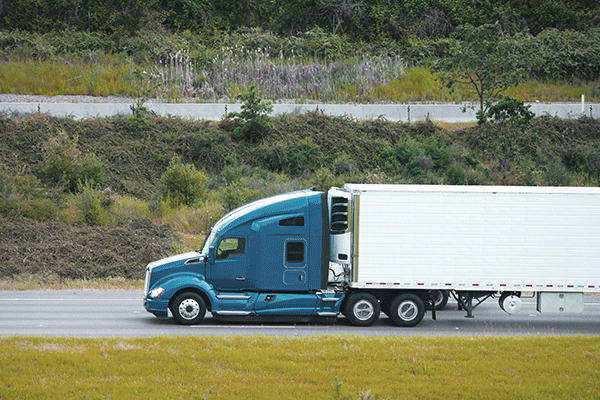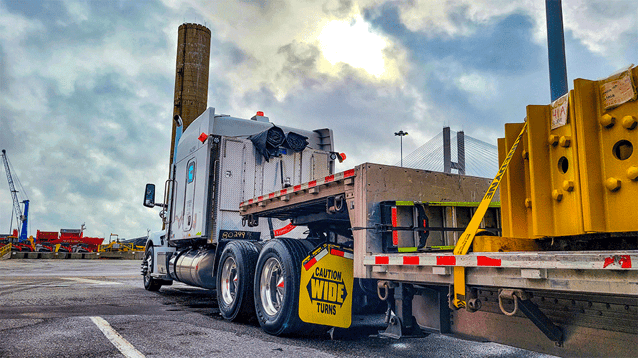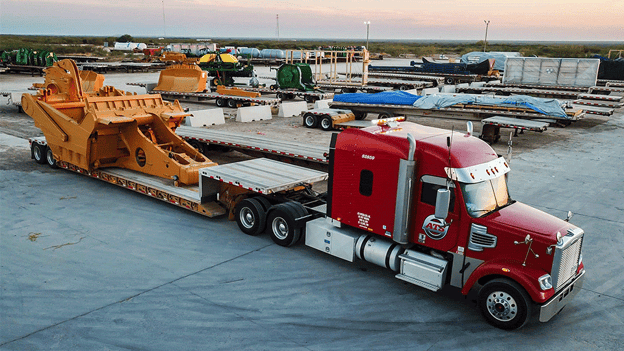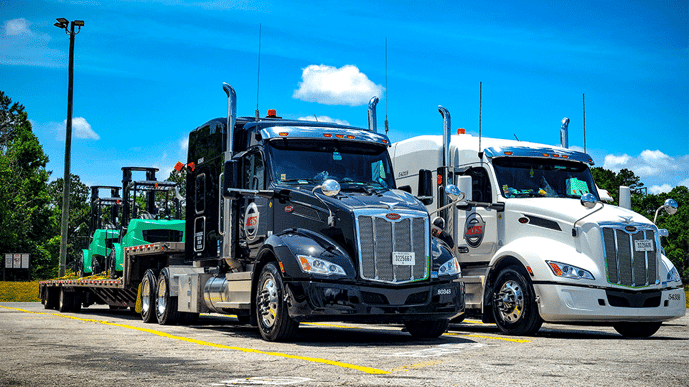
August. A seemingly simple six-letter word that has a serious impact on the trucking industry, national supply chains and your shipping dollars. But what makes August so special?
Here at ATS, we enjoy the challenge August brings to the industry we’ve called home for over 67 years. And, we’re here to tell you that when it comes to making the most of your shipping budget this month, you don’t have to worry.
As long as you take into account the trucking industry influencers outlined below, meeting your goals shouldn’t be difficult in the slightest. In this article, we’ll answer all of your burning August-related trucking questions including:
- What impacts dry van capacity in August?
- What impacts reefer capacity in August?
- What impacts open-deck capacity in August?
- What will spot quotes look like this month?
- How should you prepare for Labor Day?
- What can you do to make the most of August in this industry?
So, take one last gulp of humid air and let’s dive into everything you should know about the trucking industry in August.
⏬ Listen to The Podcast on This Episode ⏬
Discover More Ways to Listen >
What Impacts Dry Van Capacity in August?
The standard 53-foot dry van trailer is certainly a versatile equipment type and, in August, there isn’t much the trucking industry’s most popular transportation solution doesn’t move. What can I say: they have a lot to offer.
The final month of summer, a reliable indicator that the first day of school is quickly approaching, sees household goods season nationwide come to a close. And, as families get situated for another nine-month stint of normalcy, the dry vans they used to re-locate throughout June and July are available for service once more. . . but not for long.
You see, August’s calm weather and long days serve as the perfect time for shippers across our nation — and particularly in northern states — to get things moving. The holiday season and beginning of Q4 are coming and getting freight into position for their arrival takes planning. . . planning that starts in August.
As such, from hospitality goods to boxed consumer freight — and everything in between — expect to feel a pinch when sourcing for dry van capacity as August settles in.
Additionally, and without fail, August sees dry van truckers around the country serve more specific and fixed lanes than they do in other months.
Their behavior change is tied to the fact that as demand surges and their trailer space becomes more desirable, truckers like to make the most of the time they have.
As a result, truckers begin selecting the lanes they run far less sporadically than in previous months — when knowing where their next load would come from was more difficult.
Truck drivers like to plan their loads out days in advance and settling into specific lanes — lanes that are ripe with capacity demand in August— helps them do just that.
The final change we see in August is the heightened demand for dry vans in midwestern states. Harvest season begins in these areas, drawing a fair amount of attention from dry van truckers and lowering the price of securing capacity into states like North/South Dakota, Iowa, Nebraska and Minnesota (to name a few).
For shippers, all of this demand means that lead time is more important than ever when moving dry van freight. As dry vans are booked into the future, the more notice you can give your transportation provider, the better.
That said, a lead time of 24 to 72 hours should be enough time for your partner to slip your freight onto the busy August business calendars of area carriers.
What Impacts Reefer Capacity in August?

Reefer freight is always moving.
Demand to move products like pharmaceuticals and chemical materials isn’t really influenced as the months of the year change. This leaves reefer drivers with a steady stream of business year-round.
That said, transporting perishable, time-sensitive commodities like produce from the fields to grocery shelves in August. . .now there’s something to write home about.
The eighth month of the year sees a holdover — from previous months — in the harvest of some kinds of products, an increase in others and a drop in many.
On the whole, though, the demand for reefers in the south-southeastern portions of our nation drops a bit as the crops of July are swapped for those of August on a lesser scale.
Here are some examples of the fresh produce soaking up reefer capacity in southern states throughout August:
| Georgia | Tennessee | Florida | Texas |
|
|
|
|
All of these perishable goods, and goods like these, use reefer trailers in these regions during August.
In turn, the steady stranglehold of reefer demand in these regions will continue to draw the attention of drivers nationwide. The heightened earning potential in these areas during the summer months is simply too good to pass up.
As a result, you should expect to pay a bit more money for any reefer freight you need to move away from these produce harvest hotbeds in August.
Conversely, finding a reefer to carry freight into these areas will be a bit easier than other months and — if you’re lucky — may cost a bit less.
What Impacts Open-Deck Capacity in August?

Because August brings such nice weather to our shores, seasonal load restrictions — particularly in the northern portion of our nation — are a non-factor. And, when the forecast is clear, there isn’t a single type of freight that can’t be moved.
As a result, open-deck freight transported on anything from flatbeds to expandable RGNs, and everything in between, will have plenty of opportunities to hit the open road this August.
Infrastructure freight like steel, construction equipment, concrete and lumber in particular will need trailer space in August. Open-deck freight is far easier to move before the temperature drops and fall sets in.
As such, open-deck capacity may be tight this month as many of the U.S.'s 19,495 incorporated cities look to improve their infrastructure and need to move the equipment, tools and commodities to do so.
In the northern United States, August is another prime month for over-dimensional freight — like tractors and other farm equipment — to make the rounds. Planting has finished and harvest season is coming which makes August the month to get everything ready for its arrival.
For shippers like you, allowing flexibility in your open-deck equipment types this August will help you save on freight costs. Since the current trucking market is so tight, the more you can do to expand your pool of trucking options will help you maximize your budget.
Use a step-deck for your traditional flatbed freight, consider a hot shot instead of a step-deck, maybe a lowboy instead of a flatbed? The options are out there and they’ll help you save some money this year.
What Else Should You Be Thinking About In August?

Aside from the factors impacting dry van, reefer and open deck capacities this August, there are two additional things you’ll want to make note of when planning your supply chain logistics this month.
- The price of spot quotes
- Labor Day in September
1. Spot Quotes in August
As a shipper in the transportation industry, you’ve likely received spot quotes for your freight in the past. In a nutshell, spot quotes are on-the-spot transportation rates calculated based on current transportation market pricing conditions.
These quotes are designed to ensure the price shippers, like you, pay to get freight moved accurately represents the going rate for getting products shipped.
With everything that’s happening this August, you should expect to pay a bit more for your spot quotes than you have in other months.
Sure, working with a competent provider with a well-rounded knowledge of the market will help you get the most from your spot rates. That said, the capacity crunch of everything moving, certainly won’t decrease your rates.
As such, don’t be surprised if your August spot quotes are a bit more spendy than you’ve seen them before.
And, should you have consistent freight needs, consider locking yourself into a contracted rate on the lanes you run. Doing so will help you plan and budget for any upcoming freight costs.
The ebbs and flows of a tight market may impact your bottom line this month. Make sure to plan accordingly.

2. Labor Day in September
Labor Day. The first Monday of September, dedicated to celebrating this nation's working class, is a national holiday and worth noting.
Anytime a national holiday falls on a weekday, the transportation market experiences a lull. Truckers, like you and I, want to spend time at home with their families now and then.
Days like Labor Day are the perfect opportunity to do just that.
As truck drivers flip their reversible window signs to “closed," finding a truck to meet your delivery and/or pick-up times during this period will be more difficult.
To combat the price increases that accompany shipping over the Labor Day holiday this year, make sure to plan around it. Schedule shipments for the week prior (the final week of August) or the week after, to avoid the ever-predictable national holiday capacity crunch.
Related Podcast: What Happens to The Trucking Industry Leading Up to and During National Holidays?
How Should You Prepare For The Trucking Industry in August?
While birds chirp outside your kitchen window and your dog keeps all the local squirrels at bay. There are several things you can do to defend your supply chain this month.
Firstly, make sure to work with a seasoned transportation provider. August can become an expensive month for the inexperienced few who don’t know how to navigate it.
As such, make sure that your provider has all of the skills you need to serve you well this year.
But how will you know?
Be sure to ask questions like:
- “How will my freight feel the impact of the produce harvest in the south?”
- “Should I be thinking about sourcing for a different equipment type?”
- “How are current market conditions impacting my spot quotes?”
- “How can I get more from my shipping dollars?”
Second, make sure to provide your transportation provider enough lead time to secure your solution at a competitive price point. Lead time is truly the key to finding a reliable and cost-effective carrier for your load.
Finally, make sure to arm yourselves with the tools you need to succeed. Increasing your knowledge on key topics is the first step toward doing exactly that.
Check out the ATS Learning Hub for more great content to help you make the most of your budget this year.
Also; should you have any questions about how ATS helps customers thrive in August, reach out. We’re always happy to assist you in any way we can.




